Wir möchten ein Motiv, eine Person, Blüte, Pflanze, Detail etc. möglichst vom Hintergrund losgelöst darstellen. Das gewählte Objekt soll also scharf abgebildet sein, der Hintergrund jedoch in Unschärfe verschwimmen. So verstehen Fotografen den Begriff „Freistellen“ bzw. „Bokeh“, also wie das Objektiv den Hintergrund darstellt. Gelingt dies mit allen Objektiven gleich gut? Die Antwort ist, wie so oft „es kommt darauf an“.
Im Rahmen dieser Versuchsreihe mit einigen meiner Objektive, verschiedener Brennweiten und Lichtstärken, vom Weitwinkel bis zum mächtigen Teleobjektiv, stellte ich auch fest: alte, nur manuell einstellbare Objektive haben nach wie vor ihre Berechtigung, wie die Beispiele eindrucksvoll zeigen mit dem Pentacon 1.8/50mm, dem EBC Fujinon 1.8/55mm und dem EBC Fujinon 4.5/200mm Teleobjektiv. Das „alte Glas“, oftmals mit dem 42mm Schraubgewinde, lässt sich mit einem Adapter für kleines Geld an modernen Kameras mühelos verwenden.
In unseren Tagen ist das Handy immer griffbereit und die am häufigsten verwendete Kamera heute. Hier meine persönlichen Erfahrungen, nicht gleichzusetzen mit einem formalen technischen Test:
Cropping Objects / Bokeh
We want to depict a subject, a person, flower, plant, detail, etc. as detached from the background as possible. The selected object should be in focus, but the background should be blurred. This is how photographers understand the term „cropping“ or „bokeh“, i.e. how the lens represents the background. Does this work equally well with all lenses? The answer, as so often, is „it depends.“
In the course of this series of tests with some of my lenses, of various focal lengths aperture ranges, from wide-angle to powerful telephoto, I also found out: „old glass“ lenses that can only be adjusted manually still have their justification, as the examples impressively show with the Pentacon 1.8/50mm, the EBC Fujinon 1.8/55mm and the EBC Fujinon 4.5/200mm telephoto lens. These lenses often come with the 42mm screw thread, can be used effortlessly on modern cameras with an adapter for small money.
In our days, the cell phone is always handy and the most commonly used camera today. Here are my personal experiences, what is not the same as a formal technical test.
Versuch mit XIAOMI Mi10T Pro / Test with a Xiaomi M10T Pro
 |
Aus unmittelbarer Nähe From close range |
 |
Aus unmittelbarer Nähe From close range |
 |
Aus etwa 2 Meter Entfernung From approximately 2 meter distance |
 |
Aus etwa 1 Meter Entfernung From approximately 1 meter distance |
 |
Aus ca. 1/2 Meter Entfernung From approximately 1/2 meter distance |
Kamera / Camera: Fuji X-T2 – Objektiv / Lens: FujinonXF 10-24 mm F4
 |
Bei / at 10mm Blende 4 / f/4 Weitwinkel / wide angle,
|
 |
Bei / at 24mm Blende 4 / f/4 Weitwinkel / wide angle |
Kamera / Camera: Fuji X-T2 – Objektiv / Lens: Fujinon XF35mm F1.4
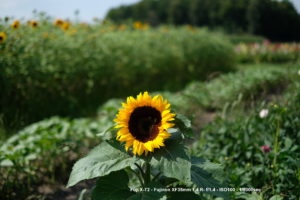 |
Blende 1.4 / f1.4 |
 |
Blende 11 / f/11 |
Kamera / Camera : Fuji X-T2 – Objektiv / Lens: Fujinon XF90mm F2R
 |
Blende 2 / f/2 Perfect Bokeh |
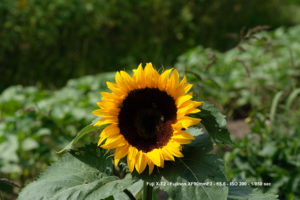 |
Blende 5,6 / f/5,6 |
 |
Blende 11 / f/11 |
Kamera / Camera: Fuji X-T2 – Objektiv / Lens: Fujinon XF100-400mm f4-5,6
 |
Blende 5 bei 100mm f/5 / at 100mm |
 |
Blende 11 bei 100mm f/11 at 100mm |
 |
Blende 5 bei 260mm f/5 at 260 mm Perfect Bokeh |
|
|
Blende 5,6 bei 400mm f/5,6 at 400 mm Extreme Bokeh |
Fujinon XF 16-55mm f2.8
Eines meiner Lieblingsobjektive ist das Fujinon XF 16-55mm 1:2,8. Es eröffnet zahlreiche Möglichkeiten und meistert mit seiner hohen und durchgängigen Lichtstärke auch bei eher schwachen Lichtverhältnissen den Job.
Bei 55mm Brennweite entspricht dies analog einer Brennweite von ca. 82 mm und damit einem leichten Teleobjektiv mit überzeugendem Bokeh.
One of my favorite lenses is the Fujinon XF 16-55mm 1:2.8. It opens up numerous possibilities and masters the job with its high and consistent speed even in rather low light conditions.
At 55mm focal length, this corresponds analogue to a focal length of about 82mm and thus a light telephoto lens with convincing bokeh.
 |
Kamera / Camera: Fuji X-H1 f/2.8 at 55mm, ISO200, 1/400 sec |
 |
Kamera / Camera: Fuji X-H1 f/2.8 at 55mm, ISO200, 1/640 sec |
Belichtungen mit analogen Objektiven ( „Altes Glas“ )
Exposures with analog lenses ( „old glass“ )
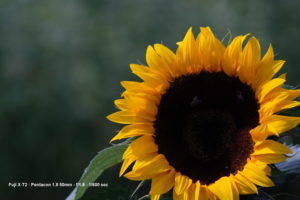 |
Kamera / Camera: Fuji X-T2 Objektiv / Lens: Pentacon 1,8/50mm at f/1,8 |
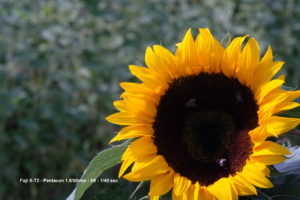 |
Kamera / Camera: Fuji X-T2 Objektiv / Lens: Pentacon 1,8/50mm at f/8 |
 |
Kamera / Camera: Fuji X-T2 Objektiv / Lens: EBC Fujinon 1,8/ 55mm at 1,8 |
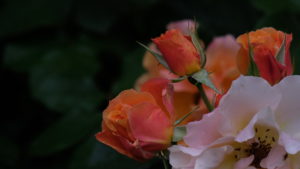 |
Kamera / Camera: Fuji X-H1 Objektiv / Lens: EBC Fujinon 200mm.T f/4,5 at f/4,5 |
Fazit:
Ein modernes (2021) Handy / Smartphone ist in der Lage zu großartigen Fotos, wie man dies vor wenigen Jahren sich nicht vorstellen konnte. Ideal für Schnappschüsse, Landschaften und Familie. Aufgrund der sehr kurzen Brennweiten der Objektive sollte man für perfektes Freistellen nicht allzu hohe Maßstäbe ansetzen. Selfies zeigen i.d.R. das Dilemma. Aufgrund des geringen Abstands zwischen Kamera und Person kommt es leicht zu Verzerrungen.
Was für das Handy / Smartphone gilt, trifft auch für die Kamera zu, insbesondere bei Verwendung von Objektiven mit kurzer Brennweite, Weitwinkelobjektiven.
Je mehr die Brennweite zulegt, desto einfacher gelingen Freistellen und Bokeh. Das zeigen die Aufnahmen schlüssig. Dabei sollte das Objektiv möglichst auf seine höchste Lichtstärke, z.B. 2.0 eingestellt sein. Bei geschlossener Blende, z.B. 11 wird ein Bokeh schwierig bis unmöglich. Hervorzuheben sind die „alten“ Objektive. Sie ermöglichen nach wie vor in dieser Hinsicht ausgezeichnete Ergebnisse.
Conclusion:
A modern (2021) cell phone / smartphone is capable of great photos, as you could not imagine a few years ago. Ideal for snapshots, landscapes and family. Due to the very short focal lengths of the lenses, you should not set too high standards for perfect cropping. Selfies usually show the dilemma. Due to the short distance between the camera and the person, distortions easily occur.
What applies to the cell phone / smartphone also applies to the camera, especially when using lenses with a short focal length, wide-angle lenses.
The more the focal length increases, the easier it is to crop and bokeh. The photographs show this conclusively. If possible, the lens should be set to its highest speed, e.g. 2.0. With a closed aperture, e.g. 11, a bokeh becomes difficult or even impossible. The „old“ lenses should be emphasized. They still enable excellent results in this respect.
